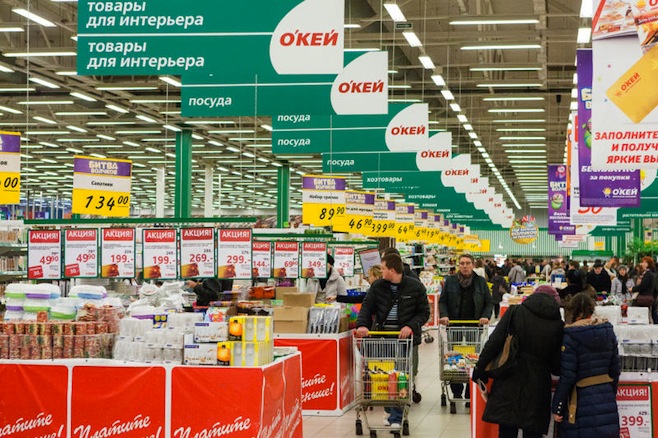Without any new ideas from a technocratic government constrained by President Vladimir Putin’s apparent indifference, the Russian economy is once again relying on consumers, who are borrowing more to buy real estate and imported products. The growth is real, but it’s also meager. And it will be hard to sustain without bigger changes.
On Monday, Rosstat, Russia’s official statistics agency, announced that the country’s gross domestic product increased 1.8% year-over-year in the quarter than ended in September. That’s lower than Bloomberg’s consensus forecast of 1.9% and slower than the 2.5% increase in the previous three months.
The oil price jumped 20% during the quarter, but the economic statistics won’t pick up the related growth until the fourth quarter. So far this year, the Russian consumer deserves most of the credit for the growing economy. After suffering through three tough years—during which time oil tanked and the ruble devalued sharply—they are buying things again. Unfortunately, most of the things Russians are buying aren’t made in Russia.
The stability of the ruble (it has gained about 1% against the US dollar so far this year) and low inflation (the Bloomberg consensus forecast is for it to fall by almost half to 3.8% this year) have helped boost consumers even though real disposable incomes dropped throughout the quarter. Households are choosing to get more leveraged.
In 2015 and 2016, household debt went down as interest rates and bad loans shot up. By the end of 2016, some 20% of consumer loans were non-performing, according to the Central Bank. Banks that had issued them rolled up their programs and viewed borrowers with increased suspicion. This year, however, the central bank has lowered its key rate from 10% to 8.25%, and banks couldn’t resist the temptation to offer more funds to private borrowers.
With mortgage rates at a historic minimum and consumer loans affordable again, Russians have some convincing reasons to warm to the idea of borrowing.
The central bank claims it isn’t worried because consumer borrowing has only been increasing by about 2.5% of the monthly retail trade turnover—not enough, by its analysts’ reckoning, to drive up inflation. Russian banks have a total mortgage portfolio of some 5.5% of GDP, compared to 20% in Poland. There are, however, signs that the central bank sees a bubble in the making, at least on the mortgage market. Starting this month, it has required drastically higher reserves against mortgages with a down payment below 20%.


